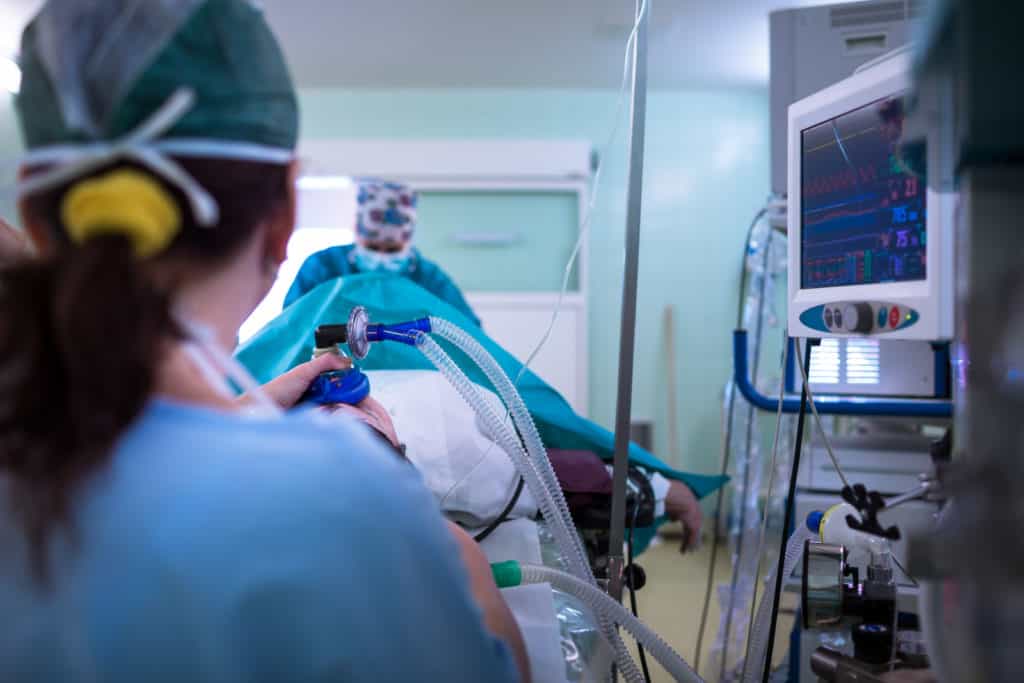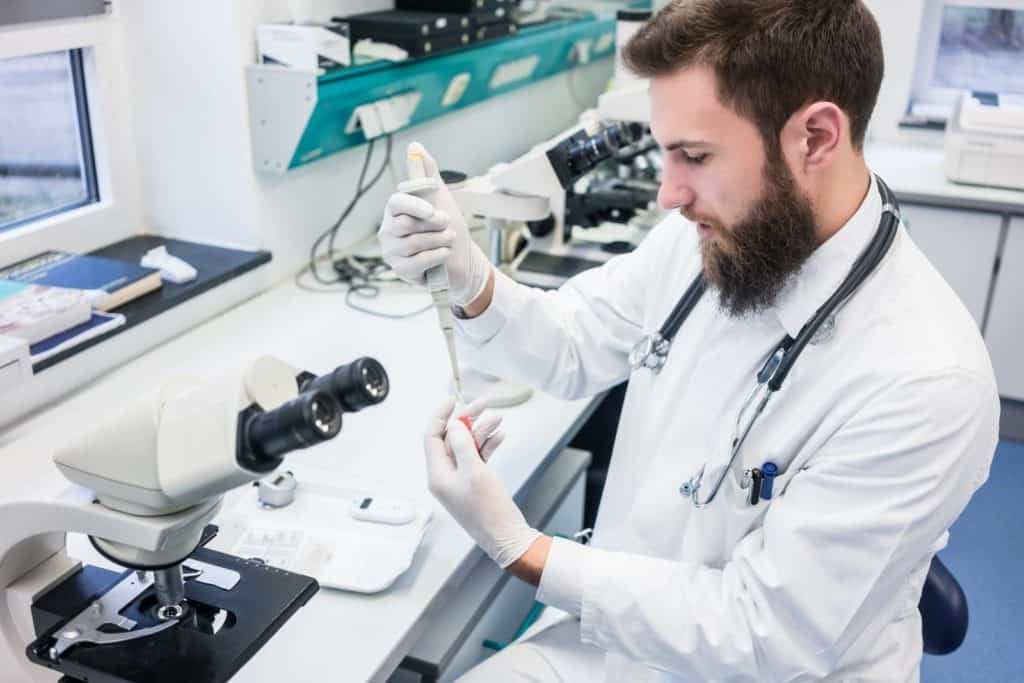Are you a current medical student or an international medical graduate thinking about doing specialty training in Australia? The entry requirements for specialty training and how to go about applying to specialty colleges can be extremely confusing. This guide summarises the key entry requirements for specialty training and pathways for training with all 15 specialty training colleges in Australia.
At the time of writing this post, I am a final year medical student in Newcastle and until looking into specialty training in Australia for this post, I didn’t realise that some of the specialty colleges below even existed. The requirements needed for each college can vary greatly. So if you are nearing the end of medical school, as I am, you will need to really plan the next two years of your career to make sure you are able to apply effectively.
There are 15 medical specialty colleges you can apply to after finishing your medical degree in Australia, with a 16th, the college of dental surgeons, available to medical practitioners that have also completed a Dental degree. Whilst the entry requirements for specialty training for each college vary there are some common requirements, which include the fact that in most cases you will require general registration, and some level of postgraduate experience in Australia, usually at least 2 years (although this can vary). In addition, a number of the specialty colleges also require that you have permanent residency or citizenship, including surgical training, sports medicine training, obstetrics and gynaecology, dermatology, ophthalmology and oral-maxillofacial surgery.
An Overview of the Specialty Colleges.
Let’s start by listing the 16 specialty colleges. These are the bodies that have been recognised by the Medical Board of Australia for providing postgraduate medical training. They determine the entry requirements for specialist training in Australia. You can also find out more information about these colleges in a related post on this blog.
The 16 specialist colleges in Australia are:
- Australasian College of Sport and Exercise Physicians (ACSEP)
- Australasian College for Emergency Medicine (ACEM)
- Australian College of Rural and Remote Medicine (ACRRM)
- Australasian College of Dermatologists (ACD)
- Australian and New Zealand College of Anaesthetists (ANZCA)
- College of Intensive Care Medicine of Australia and New Zealand (CICM)
- Royal Australian College of General Practitioners (RACGP)
- Royal Australasian College of Medical Administrators (RACMA)
- Royal Australasian College of Physicians (RACP)
- Royal Australasian College of Surgeons (RACS)
- Royal Australian and New Zealand College of Ophthalmologists (RANZCO)
- Royal Australian College of Obstetricians and Gynaecologists (RANZCOG)
- Royal Australian and New Zealand College of Psychiatrists (RANZCP)
- Royal Australian and New Zealand College of Radiologists (RANZCR)
- Royal College of Pathologists of Australasia (RCPA)
- Royal Australasian College of Dental Surgeons (RACDS)
But how do I know what college to apply for? Below I have provided for you a brief description of what types of specialties each college trains for. Along with the entry requirements for specialty training for each college.
You can also read more about how the specialty training system in Australia works in general on this related post.

The Australasian College of Sport and Exercise Physicians (ACSEP)
The ACSEP website describes the role of a Sports and Exercise Medicine practitioner as follows:
A Sports Physician “provides for safe and effective sporting performance at all levels. Alongside this is the increasing recognition of the importance of exercise in the prevention and treatment of common and often serious medical conditions, such as arthritis, heart disease, diabetes and many cancers.”
Entry Requirements for Specialty Training as a Sports Physician
Entrance to the training program is open to Australian citizens or permanent residents with general registration completing PGY 3 or more. The first step is passing the ACSEP entrance examination held twice a year in March and July which costs $2100. Then paying the application fee of $896.50 to submit your CV and referees for scoring. Your application must contain 3 referees, one of which being an ACSEP fellow.

The Australasian College for Emergency Medicine (ACEM)
ACEM Fellows deal with all people requiring urgent medical care. They manage conditions from every area of medicine. The majority of your work as an emergency physician will be in an emergency department. But FACEM’s can also be asked to work in other areas of critical care medicine such as retrieval services, or providing urgent ward cover or even coverage to intensive care units.
Entry Requirements for Specialty Training in Emergency Medicine.
Entrance to the ACEM training program is available to Australian and New Zealand citizens, permanent residents, or people with relevant visas (you need a visa for the length of your training). You must have general registration and be completing PGY 3 or more.
The experiential requirements are quite complex.
You must have completed the following as a minimum:
- One 6-month (FTE) ED placement that must have been completed:
- in a single Emergency Department where the applicant assesses and manages all types of patients in that Emergency Department (i.e. not only fast-track patients) in Australia or New Zealand
- entirely within the date range relevant to the round in which you are applying
- during or after PGY2
- at a minimum of 0.5 FTE
- Your ED placement must NOT IN ANY PART be completed:
- at an Australian Urgent Care Centre
- of your six months FTE ED placement, no more than five weeks can be leave
- Three placements in three different disciplines other than emergency medicine, each of which must have been completed:
- as a minimum of eight weeks full-time equivalent (FTE) of clinical work at a single site, exclusive of any leave
- at a minimum of 0.5 FTE
- At least one of your non-ED placements must have been completed during or after PGY2. Non-ED placements may have been completed in PGY1 and/or overseas.
To enrol with ACEM you also need to have had relevant experience prior to application involving 6 months FTE in a single Emergency Department in Australia or New Zealand after PGY 2 and in the year prior to application. You will also need 3 placements in 3 different disciplines other than Emergency Medicine, for a minimum of 8 weeks each, with at least 1 placement completed during or after PGY 2.
As of 2022 ACEM has developed a new training program and application process. The application no longer includes an interview. It comprises a structured CV, nominated references and an institutional reference.
You can nominate 4 referees
Your selection of referees must comprise the following roles:
- The Director of Emergency Medicine Training (DEMT), or the Director of EM (DEM) in departments not accredited for the FACEM Training Program;
- The Term Supervisor if this is not also the DEMT;
- One other senior EM consultant (FACEM), defined as at least three years since commencing employment as an EM consultant;
- One other senior clinician (medical or EM nurse) who has worked with you during your ED term. This may include non-EM consultants who have worked with you in the ED but must not be someone with whom you have worked exclusively in a non-ED term.

Australian College of Rural and Remote Medicine (ACRRM)
As described by the ACRRM website, the role of the Rural Generalist is, “a General Practitioner who has specific expertise in providing medical care for rural and remote or isolated communities. A Rural Generalist medical practitioner understands and responds to the diverse needs of rural communities: this includes applying a population approach, providing safe primary, secondary and emergency care, culturally engaged Aboriginal and Torres Strait Islander peoples’ health care as required, and providing specialised medical care in at least one additional discipline.”
Fellowship of ACRRM is one of two ways of becoming recognised as a specialist general practitioner in Australia. The other being via the Royal Australian College of General Practice.
Entry Requirements for Specialty Training in Rural General Practice with ACRRM
There are a number of different pathways that you can choose from in order to obtain your Fellowship with the ACRRM (FACRRM). Therefore the entry requirements for specialty training with ACRRM vary a little bit.
There are four training pathways that lead to fellowship with the ACCRM. The Independent Pathway, the Rural Generalist Training Scheme, Australian General Practice Training, and the Remote Vocational training.
The Australian General Practice Training Program.
The Australian General Practice Training is a, “fully funded Commonwealth pathway providing vocational training through accredited Regional Training Organisations” according to the ACRRM website. This is the most common pathway in which doctors achieve the FACRRM.
Eligibility for this pathway has no citizenship requirements, however evidence of citizenship, residency or relevant visa is required for application. Applicants must have general registration and pay the $700 application fee to meet eligibility requirements.
The Rural Generalist Training Scheme
The Rural Generalist Training Scheme is, “a four-year, fully funded stream of the College-led Independent Pathway that leads to Fellowship of ACRRM” according to the ACRRM website. It is available to Australian citizens or permanent residents.
Doctors born overseas and who obtained their primary medical degree in Australia or New Zealand may be eligible to apply with Australian temporary residency. Applicants are required to have general registration. 2 referees who were direct supervisors for at least 4 weeks within the past 3 years are required for application. A $700 application fee must be paid with the submission of your application.
Becoming a rural generalist is similar to the AGPT pathway but also involves an additional one or two years in an Advanced Specialty Training post (AST). Undertaking an AST is a great idea if you are considering working as a rural GP where you both provide primary care services but also hospital services in a smaller rural centre. Some of the advanced specialties that rural generalists can choose to work in include: anaesthetics, obstetrics and gynaecology, mental health and surgery.
The Independent Pathway
The Independent Pathway is “A flexible, self-directed, self-funded Fellowship training pathway delivered and supported directly by ACRRM” according to the ACRRM website. It is available to Australian citizens, permanent residents, and people with skilled migration visas.
The level of registration needed can be general registration, Specialist registration, Provisional registration, or Limited registration for an area of need. So this is also a potential pathway for IMG doctors.
To apply you will require 2 referees who were direct supervisors for at least 4 weeks within the past 3 years are required for application. The application fee for this pathway is $700, and a $495 enrolment fee is due on acceptance to the college, as well as a $24,950 Education Program Gee to cover the first year of education.
The Remote Vocational Training Scheme
The Remote Vocational Training Scheme is a, “Fully funded Commonwealth pathway providing vocational training for medical practitioners in remote and isolated communities and Aboriginal and Torres Strait Islander communities throughout Australia” according to the ACRRM website. Australian citizens, permanent and temporary residents are eligible to apply if they currently work in a remote community of MMM 4-7, or an Aboriginal community of MMM2-7, and will stay there throughout their training.
Applicants can have General, Provisional, or Limited Registration for Area of Need if they have completed the AMC part 1 examination. So this is a training pathway that is open to IMG doctors as well.

Australasian College of Dermatologists (ACD)
The ACD training program teaches about all conditions of the skin, hair and nails. It is a 4 year course only undertaken in accredited training positions in hospitals and come private dermatology practices.
The program involves onsite clinical training, workshops for procedural skills and professional development, and online learning modules ($3250). The assessments for the program involves summative in-training assessments, workplace-based assessments, a fellowship examination ($4000) undertaken in the final year, and the completion of a research project. The training fee for the program is $5602.
Entry Requirements for Specialty Training in Dermatology
Entrance to the training program is available to Australian citizens and permanent residents with general registration in Australia. You must have successfully completed a primary medical degree and can apply while completing PGY 2 or more, with no specific specialty rotations being taking into consideration for application. There is an application fee of $1600 which is required to be paid before your application can be submitted.
Your application requires 6 referees who have worked directly with you in the last 2 years. Two referees need to be medical practitioners of the same level, 2 others being medical practitioners who have supervised you, and 2 paramedical or nursing staff.
There is also a situational judgement test. If you are selected for an interview then this is conducted as a Multiple Mini Interview held as part of a national process.

Australian and New Zealand College of Anaesthetists (ANZCA)
According to the ANZCA website, “Anaesthetists are highly qualified specialist doctors with unique clinical knowledge and skills. They have a major role in the perioperative care of surgical patients and are closely involved in other important fields of medicine such as resuscitation, intensive care medicine, pain medicine, retrieval, disaster response and hyperbaric medicine. Core anaesthesia practice involves assessing patients thoroughly and applying both physiological and pharmacological knowledge to best care for them through surgery.”
The ANZCA fellowship training program is a 5-year program broken down into 4 training blocks, each with an assessment called a Core Unit Review at the end of the clinical placement. The program starts with 6-months of fundamental clinical skills called introductory training, followed by 18 months of basic training where trainees sit their primary exam (formerly Part 1) costing $5525. Next is 2 years of advanced training where the Final exam (formerly Part 2) is sat costing $6145. The final year of training is called Provisional fellowship training and focuses on clinical training and workplace-based assessments.
Entry Requirements for Specialty Training in Anaesthesia
Application to the training program is available to any medical practitioner who has secured an accredited training position in Australia or New Zealand. Citizenship requirements are dependant on the position applied for.
You must be at least completing PGY 2 at the time of application with a minimum of 12 months of experience in specialties other than anaesthetics or intensive care. There is a $750 application fee, and a $2435 trainee registration fee if successful.

College of Intensive Care Medicine of Australia and New Zealand (CICM)
As described by the CICM website, “An intensive care specialist is a medical specialist trained and assessed to be proficient in the comprehensive clinical management of critically ill patients as the leader of a multidisciplinary team. Critically ill patients include patients with life-threatening single and multiple organ system failures, those at risk of clinical deterioration as well as those requiring resuscitation and/or management in an intensive care unit or a high dependency unit.”
The CICM has two training programs: General Intensive Care Medicine and Paediatric Intensive Care Medicine. Both programs are a minimum of 6 years in duration and have the same application requirements.
The programs differ in the rotation requirements with the Paediatric program requiring a minimum of 18 months of the 24 months of core training to be in a Paediatric ICU and the additional 12-month medicine rotation to be in Paediatric medicine.
Both programs require a 3-month rural rotation during training. The assessments of the course include 2 exams, one during the first year of training, and the second after completion of at least 12 months of ICU core placement.
Entry Requirements for Specialty Training in Intensive Care Medicine
Application to the training program is available to any doctor who meets the citizenship or visa requirements to work at the hospital they intend to train at. Trainees are required to have general registration and have completed a minimum of 1-year post-graduate experience, as well as a minimum of 6 months supervised experience in an ICU accredited by the CICM within three years of application.
A trainee registration fee of $2160 must be paid before the submission of your application. Three referees are required for the application, two of which must be CICM fellows and one a senior ICU nurse who has worked directly with the applicant. A situational judgement test has been implemented in 2021 as part of the application process and is mandatory to sit for a valid application, however, results currently do not impact applicant performance.

Royal Australian College of General Practitioners (RACGP)
The RACGP website describes the role of the General Practitioner as the “most likely the first point of contact in matters of personal health.”
The RACGP is one of two colleges recognised for training for general practice. The other being ACRRM.
A GP “coordinates the care of patients and refers patients to other specialists; cares for patients in a whole of person approach and in the context of their work, family and community; cares for patients of all ages, both sexes, children and adults across all disease categories; cares for patients over a period of their lifetime; provides advice and education on health care; performs legal processes such as certification of documents or provision of reports in relation to motor transport or work accidents.”
The RACGP has a single training program for all trainees but has a general and rural pathway for entrance. The general pathway is for all applicants training in an accredited general practice, and the rural pathway is for applicants applying to work in rural general practice with the option for an additional extra year of training to obtain the additional Fellowship in Advanced Rural General Practice (FARGP).
Entry Requirements for Specialty Training in General Practice
Application to the Australian General Practice Training Program is available to all Australian and New Zealand citizens or permanent residents with general medical registration.
You must have a primary medical qualification obtained in Australia or New Zealand, or be an international graduate with an AMC certificate. Trainees must have completed one year of postgraduate experience in any specialties to be eligible but can apply during this first year.
If you are an IMG or completed your medical degree in Australia as an international student you are only eligible to apply for the rural pathway.
Similar to ACRRM there are a number of other routes for completing the FRACGP. However, these are generally only accessed by IMG doctors. So we have not listed them here. You may wish to also view the related post on general practice training pathways here.

Royal Australasian College of Medical Administrators (RACMA)
RACMA describes the role of a Fellow as a doctor who is involved with “administration or management utilising the medical and clinical knowledge, skill, and judgement of a registered medical practitioner, and capable of affecting the health and safety of the public or any person. This may include administering or managing a hospital or other health service, or developing health operational policy, or planning or purchasing health services.”
The RACMA fellowship training program is a minimum of 3 years of clinical experience in an accredited training post. The program involves training in health care systems, health law and ethics, health economics, financial management, epidemiology, and statistics.
Entry Requirements for Specialty Training in Medical Administration
Application to the training program is available to any doctor working in a RACMA accredited training post. There are no specific citizenship or residency requirements if the applicant is approved to work in an accredited training post. Applicants must hold a primary medical degree and general registration, and have a minimum of 3 years of postgraduate clinical experience with direct patient contact. An application fee of $1433.50 is required to be paid before the submission of your application to the program.

Royal Australasian College of Physicians (RACP)
The RACP website describes the role of Fellows of the RACP as “physicians and paediatricians are medical doctors who have completed Advanced Training in a medical specialty with the RACP to diagnose and manage complex medical conditions.”
The RACP is by far the most complex college in the types of specialists and subspecialists it trains and supports as Fellows. It also has a lot of overlap with other colleges for certain join training schemes.
The two largest RACP training programs are for adult internal medicine and paediatrics and child health. Both are 6-year programs with 3 years of basic training undertaken by all trainees, followed by 3 years of advanced training in an advanced training program. A fee of $3646 if required to undertake basic training.
Trainees can select the Adult Internal Medicine pathway, or the Paediatrics and Child Health Pathway.
The Paediatric and Child Health pathway requires 24 months of the 36 months of core teaching to be done in paediatric specialties. Completion of the RACP Divisional Examinations and basic training allows paediatric trainees to apply to do advanced training in areas such as General Paediatrics, Community Child Health, Neonatal/Perinatal Medicine, Paediatric Rehabilitation Medicine, and Paediatric Emergency Medicine.
Entry into Advanced Training in Paediatrics is conducted by a separate and new application and interview process.
The Adult Internal Medicine pathway requires a minimum of 12 months of training in medical specialties and a minimum of 3 months in general and acute care medicine. Once again, you will also need to complete the Divisional Examinations in order to progress. This pathway is required for trainees wishing to do advanced training in areas such as General and Acute Care Medicine, Geriatric Medicine, Respiratory Medicine, Neurology and Cardiology.
Similar to Paediatrics entry into Advanced Training in Adult Medicine is conducted by a separate and new application and interview process.
There are a number of other specialty programs that you can undertake with the RACP. These are:
- Occupational and Environmental Medicine
- Rehabilitation Medicine
- Sexual Health Medicine
- Palliative Medicine
- Public Health Medicine
- Addiction Medicine
In addition, there are a number of joint training programs, including 4 with the Royal College of Pathologists of Australia (RCPA) in:
- Haemtaology
- Immunology and Allergy
- Endocrinology and Pathology
- Infectious Diseases and Microbiology
A link to a full list of the RACP Advanced Training programs is below
Entry Requirements for Specialty Training in Adult Internal Medicine and Paediatrics and Child Health
To be eligible to enter basic training applicants must have general registration and have completed at least one year of clinical experience (intern year).
Applicants must also be employed in an accredited hospital where basic training will be undertaken, with approval to apply for Basic Training from the hospital/network Director of Physician Education. Submission of an application, as well as a $1173 application fee, is required.

Royal Australasian College of Surgeons (RACS)
The role of a RACS surgeon is described on their website as, “highly qualified specialists who stay up-to-date with the latest developments in their area of skill. They have considerable knowledge and provide the best possible care to their patients.
“With a proven commitment to lifelong learning and the highest standards of professionalism, RACS Fellows offer you and your family caring, safe and comprehensive surgical care.”
“Being a RACS surgeon requires ongoing learning and maintenance of knowledge and skills demonstrated through Continuing Professional Development (CPD) programs ensuring that Fellows not only maintain competency but also continuously build on and improve their clinical knowledge and skills to provide high-quality contemporary healthcare.”
Each surgical specialty is applied for separately through the surgical specialty societies or associations. They all have their own specific entry requirements for specialty training, however all specialties are also required to follow the RACS Generic Eligibility requirements for Surgical Education Training (SET) as well. To apply for any surgical specialty, applicants must first register to apply for SET on the RACS website before registering for SET training on the appropriate surgical specialty website. The exception is the Cardiothoracic and Paediatric surgery SET programs where the applications are made through the RACS online system.
The 9 Surgical Specialties in Australia are:
- Cardiothoracic Surgery
- General Surgery
- Neurosurgery
- Orthopaedic Surgery
- Otolaryngology
- Paediatric Surgery
- Plastic and Reconstructive Surgery
- Urology
- Vascular Surgery
RACS Generic Eligibility Requirements for Selection
Anyone wishing to apply to surgical specialty training in Australia must have Australian citizenship or permanent residency and General Registration.
Applicants must also complete a RACS specific Hand Hygiene Learning Module and the RACS Operating with Respect eModule to submit with their application. The final generic eligibility requirement for the RACS is passing the General Surgical Sciences Exam (GSSE), an exam covering anatomy, pathology and physiology costing $4145 to sit.
All SET training schemes generally require an application process where your CV and referee reports are scored and this determines whether you progress to the interview phase.
This year the RACS has introduced a Situational Judgement Test (SJT) as part of their selection criteria. This is mandatory to complete for application to any of the surgical specialties, however as it is newly implemented the results of the test do not impact application results for this year. The RACS SJT is designed to test the domains of the RACS competencies of professionalism and ethics, Management and Leadership, Collaboration and Teamwork, Communications, and Health Advocacy.
The format of the interview is generally a multiple mini interview format.
Entry Requirements for Specialty Training in Cardiothoracic Surgery
Applicants to the cardiothoracic surgery training program are required to have specific experience prior to application. Within the last 6 years, the applicant must have had a minimum of 2 surgical terms of at least 10 weeks duration in any surgical specialty, plus a minimum 10-week rotation in cardiothoracic surgery (cannot be just cardiac or just thoracic).
Applicants must also have proof of competency for the procedural skill of inserting a chest drain, harvesting a long saphenous vein and harvesting a radial artery.
The referee requirements for cardiothoracic surgery training is for 12 total referees who are specialists and have been your supervisor in the past 4 years. At least 2 must be from the most recent cardiothoracic rotation, at least 1 from the rotation the applicant is currently on, and at least 3 from rotations in either anaesthesia, cardiology, oncology or respiratory medicine where the referee had clinical interaction with the applicant for at least 3 months.
The application fee is the RACS selection processing fee of $825.
Entry Requirements for Specialty Training in General Surgery
The General Surgery Australia (GSA) website describes the role of a general surgeon as a surgeon who, “is trained to provide expert treatment across a broad range of emergency and planned surgical procedures”.
The minimum experience requirements for entry to General Surgery includes 26 weeks of General Surgery in rotations of at least 8 weeks, and 8 weeks of critical care experience in a single rotation.
As well as this experience, applicants must also provide proof of competency in the areas of common procedural skills and professional capabilities. GSA provides a document listing all 26 skills and capabilities and requires applicants to get surgical consultants to sign the applicant off as competent in all skills and capabilities to be eligible for training. More information about which specialty rotations can be used for general surgery and critical care rotations, and the list of procedural skills and professional capabilities at the link below.
Referee requirements for General Surgery SET involve 6-10 surgical consultants who have directly supervised you as an applicant during their eligible surgical rotations. Included in this must be at least 2 specialist General Surgeons. All applicants must also pay the General Surgery Selection fee of $935 to be eligible for selection into training.
Entry Requirements for Specialty Training in Neurosurgery
The role of a specialist neurosurgeon according to the Neurosurgical Society of Australasia (NSA) is to “treat conditions and diseases related to the brain, spine and nervous system.”
Applicants are allowed a maximum of 4 attempts at selection into the NSA training program. For entry into the specialty neurosurgery SET applicants are required to have 24 weeks FTE of direct neurosurgical experience within the 3 years prior to application.
Applicants must pay the $985 selection application fee prior to the application closing date. This fee pays for the neurosurgery anatomy examination which must be attempted prior to selection and a score over 70% must be achieved to pass.
Referee requirements for neurosurgery SET require the reporting of every neurosurgical specialist who has been a direct supervisor of the applicant in the previous 3 years. 3 of the specialists will be selected at the NSA’s discretion to provide a referee report.
Entry Requirements for Specialty Training in Orthopaedics
The Australian Orthopaedic Association (AOA) describes an orthopaedic surgeon as “a medical doctor with extensive training in the diagnosis and surgical, as well as non-surgical, treatment of the musculoskeletal system.”
Applicants are allowed a maximum of 3 attempts at selection into the AOA training program. The experience requirements for specialty orthopaedic training involves a minimum of 26 weeks FTE orthopaedic surgical experience within 2 years of application, made up of rotations of at least 6 weeks duration. Experience must be completed during PGY 3 or later.
All applicants must also complete a Radiation Safety Course, licenced in the state of their application.
The referee requirements for AOA SET involves providing a ‘departmental referee report’ from all orthopaedic rotations completed in the past 2 years. The ‘departmental referee report’ is a single report per rotation completed involving the opinion of the surgical team and non-surgical colleagues working with the applicant during the rotation.
The Selection Application Fee of $1,480 must be paid prior to the application due date.
Entry Requirements for Specialty Training in Otolaryngology
According to the Australian Society of Otolaryngology Head and Neck Surgery (ASOHNS), otolaryngologists are “specialist Surgeons who investigate and treat conditions of the ear, nose, throat, and head and neck”.
Applicants are allowed a maximum of 4 attempts for selection into the ASOHNS training program. The minimum experience requirements for application include 10 consecutive weeks in otolaryngology and 20 weeks of surgical experience completed in rotations of at least 10 weeks duration, completed 1 January 2019. Applicants must also have completed a rotation of at least 8 weeks duration in both a dedicated Emergency Department, and a dedicated Intensive Care Unit, but these rotations can be completed at any time from the first year post-graduation.
Application processing fee of AUD $900 must be paid before the application due date.
The referee requirements involve a minimum of 8 and a maximum of 12 referees who must all be surgical consultants who have directly supervised the applicant during a rotation of at least 10 weeks. All specialist otolaryngologists who have been supervisors during the required otolaryngology rotation must be included for reference.
Entry Requirements for Specialty Training in Paediatric Surgery
The Australian and New Zealand Association of Paediatric Surgeons (ANZAPS) website describes paediatric surgery as “the specialty that includes surgeons who have specialist training in the management of children who have conditions that may require surgery. Specialist paediatric surgeons manage non-cardiac thoracic surgery, general paediatric surgery and paediatric urology. Their responsibilities include involvement in the antenatal management of congenital structural abnormalities, neonatal surgery and oncological surgery of children.”
The minimum experience requirements for the paediatric SET program involves 26 weeks FTE experience in any surgical specialty working at a registrar level, and at least 10 weeks of FTE experience in a paediatric surgery unit. Both must have been completed within the 3 years prior to application.
Applicants must also show competence in a range of procedural skills and professional capabilities to be eligible for selection. These skills are recorded in a report provided by RACS which included 27 skills that applicants must get signed off by a surgical consultant who has supervised the applicant on a surgical rotation in the past 3 years.
The referee requirements for the paediatric SET involves the submission of all supervising surgical consultants from all surgical rotations in the past 2 years, and from all paediatric surgical rotations at any time post-graduation. The selection board will then contact 3 consultants from this list for reference.
The application fee is the RACS selection processing fee of $825.
Entry Requirements for Specialty Training in Plastic and Reconstructive Surgery
The Australian Society of Plastic Surgeons (ASPS) describes the role of a plastic surgeon on their website as, “a broad scope of practice from procedures to improve your aesthetic appearance to reconstructive surgery.”
Applicants are allowed a maximum of 3 attempts for selection into the ASPS training program.
The experience requirements for eligibility involves 3 specific rotations. The first is an Emergency Department or Intensive Care Unit rotation for a minimum of 8 weeks FTE completed at any time post-graduation. Second is a rotation with direct experience in Plastic and Reconstructive Surgery for a minimum of 10 weeks FTE at any time from first-year post-graduation but within 5 years of application. The final is a surgical rotation in any surgical specialty for a minimum of 26 continuous weeks, completed at post-graduate year 2 or later, but within 5 years of application.
The Plastic and Reconstructive Surgery SET program requires a reference from 3 to 5 consultant surgeons, with direct contact with the applicant, from every surgical rotation of any surgical specialty completed in the past 3 years. It requires at least 1 reference from a clinical nurse who has worked directly with the applicant, for each surgical rotation of any surgical specialty completed in the last two years prior to application. It also requires a reference from all consultant Plastic and Reconstructive Surgeons from the most recently completed Plastic and Reconstructive Surgery rotation.
An application fee of $860 must be paid at the time of application.
Entry Requirements for Specialty Training in Urology
The Urological Society of Australia and New Zealand (USANZ) describes the role of a urologist on their website as “surgeons who treat men, women and children with problems involving the kidney, bladder, prostate and male reproductive organs. These conditions include cancer, stones, infection, incontinence, sexual dysfunction and pelvic floor problems.”
The minimum experience requirements for eligibility for an application involves 26 weeks of Surgery in General at PGY2 or above, a further 26 weeks in Urology at PGY 2 or above and 10 weeks in Emergency medicine at PGY 1 or above. All experience must be completed in rotations of a minimum of 6 continuous weeks. The Surgery in General requirement can only be met on a surgical rotation in the specialties of General Surgery, Acute Surgical Unit, Breast and Endocrine, Colorectal, Surgical Oncology, Transplant, Trauma, Upper GI/Hepatobiliary, Vascular Surgery, Paediatric Surgery or Urology (cannot also count as the urology specific rotation).
Eligibility for an application requires references from 8 consultants and 6 allied health professionals. The consultants must have been direct clinical supervisors during any rotation in the last 3 years, they can be surgical or non-surgical consultants. Of the 8 nominated, 6 are the primary referees and 2 will be reserve referees. No more than 3 consultants nominated as primary referees can be from rotations undertaken during the same year. The allied health references are divided into 4 primary referees and 2 reserve referees. Eligible allied health is ideally a senior nurse with direct and regular clinical interactions with the applicant during a rotation, though other allied health professionals can be nominated if there is proof of significant clinical interaction between the nominated referee and the applicant.
An application fee must be paid before the application due date. There is no current indication of the cost of this fee.
Entry Requirements for Specialty Training in Vascular Surgery
The Australia and New Zealand Society for Vascular Surgery (ANZVSV) describes Vascular Surgery as “a specialty of surgery in which diseases of the vascular system, or arteries and veins, are managed by medical therapy, minimally-invasive catheter procedures and surgical reconstruction. The SET Program in Vascular Surgery is designed to provide trainees with clinical and operative experience to enable them to manage patients with conditions that relate to the specialty”.
The experience requirements for Vascular surgery involves 8 weeks of General Surgery, 8 weeks of Intensive Care, and 16 weeks of Vascular Surgery completed within the last 5 years prior to application. Experience can be completed in no more than two rotations for each requirement, and rotations must be at least 4 weeks in duration. The Vascular Surgery rotation must have at least 2 specialist Vascular Surgeons employed at the hospital to be eligible.
The referee requirements for the ANZVSV training program is a minimum of 7 and a maximum of 10 supervising surgical consultants, with at least 2 being Vascular Surgery Consultants. At least 1 and a maximum of 3 referees must be nominated from each surgical rotation listed on the application.
An application fee must be paid before the application due date. There is no current indication of the cost of this fee.

Royal Australian and New Zealand College of Ophthalmologists (RANZCO)
According to the RANZCO website, “the objective of the Vocational Training Program (VTP) is to produce a specialist ophthalmologist who, on completion of training, is equipped to undertake safe, unsupervised, comprehensive, general ophthalmology practice… Training and assessment through the VTP continues to produce ophthalmologists of the highest order through the seven key roles that underpin the selection of trainees. These are ophthalmic expert and clinical decision-maker, communicator, collaborator, manager, health advocate, scholar, and professional.”
The RANZCO Vocational Training Program is a minimum of 5 years of training. Two years of Basic Training in ophthalmic science and clinical skills, two years of Advanced Training to integrate knowledge and surgical skills, and one year of Final Year Training to develop the trainee into an independent ophthalmologist ready for independent practice.
Entry Requirements for Specialty Training in Ophthalmology
Application to the Vocational Training Program is open to all Australian citizens or permanent residents with a medical degree and general registration in Australia. And have completed a minimum of two years of post-graduate experience, at least 18 months of which cannot be in ophthalmology. The RANZCO encourages a broad range of experience for their trainees.
Entry into RANZCO is under review. But for 2022 will likely involve an application process and scoring of references as well as a situational judgement test. The results of this process will determine which candidates progress to a binational coordinated multiple mini interviews (MMIs).
Candidates who are successful in the MMIs finally progress to State or jurisdictional interview panels where they are interviewed again for specific posts.

Royal Australian and New Zealand College of Obstetricians and Gynaecologists (RANZCOG)
RANZCOG’s website says that “Doctors hoping to become specialists in O&G have an interest in pregnancy, childbirth and the reproductive health of women.” The role of a specialist Obstetrician and Gynaecologist is to hold “the overall responsibility for the care of each patient referred to them. Specialists may lead a team of trainee doctors and are responsible for their training, as well as managing the patients that the trainee doctors see. They also have managerial, educational and organisational roles and will usually have a special area of interest.”
The RANZCOG Training program is a minimum of 6 years of training comprised of 4 years of the Core Training Program and 2 years of the Advanced Training program.
Entry Requirements for Specialty Training in Obstetrics and Gynaecology
Applicants are allowed a maximum of 3 attempts for selection to the RANZCOG specialty training program.
Eligibility for the training program requires applicants to be Australian Citizens or permanent residents with general registration in Australia who have graduated with a primary medical degree or successfully completed the AMC certificate.
Applicants must be PGY2 or above to start on the training program, and have secured an accredited training position in Australia with approval to undertake training.
Applicants are required to provide a minimum of 2 and a maximum of 4 referees for application. Ideally 2 should be Fellows of the RANZCOG, however, if that cannot be achieved, RANZCOG trainees in advanced training are eligible to be referees, or otherwise any other specialist consultant from another specialty who the applicant has close clinical contact. If the applicant has completed a prevocational Obstetrics and Gynaecology rotation of minimum 6 months in the last years, the RANZCOG selection board will also contact the department worked in for reference.
The application fee is $803 with an additional fee for the interview being $1,242.

Royal Australian and New Zealand College of Psychiatrists (RANZCP)
The RANZCP website describes the role of a psychiatrist as, to: “listen to and provide expert care for vulnerable people and their families and whanau; prevent, diagnose and treat mental health conditions; lead teams of other doctors and health professionals; research to lead breakthroughs in psychiatry and mental health; foster new generations of psychiatrists; provide expert opinion to the community, government and courts.”
The RANZCP Fellowship Training program is a minimum five-year course divided into three stages. Stage 1 is 12 months of adult clinical psychiatry including a minimum of 6 months in an acute setting. Stage 2 is 24 months divided into 6 months of consultation-liaison psychiatry, 6 months of child and adolescent psychiatry, and two 6-month rotations from any of addiction, adult, forensic, indigenous, or old-age psychiatry. Stage 3 is 24 months of training divided into 4 6-month rotations into any RANZCP-approved areas of practice. The assessments for the program include workplace-based assessments, written exams, OSCEs, a written case, and a research project.
Entry Requirements for Specialty Training in Psychiatry
Eligibility for the program requires general registration in Australia, a primary medical degree and the completion of PGY1 or later at the time of starting training. Applicants must be appointed to an accredited training post and then selected to enter the Fellowship Training Program and pay the initial registration fee of $702.

Royal Australian and New Zealand College of Radiologists (RANZCR)
The RANZCR is comprised of the Faculty of Clinical Radiology and the Faculty of Radiation Oncology.
According to the RANZCR website, the role of a Clinical Radiologist is “a specialist medical doctor who has had postgraduate training in performing and interpreting diagnostic imaging tests, and carrying out interventional procedures or treatments, using X-ray, ultrasound, and magnetic resonance imaging equipment.”
The role of a Radiation Oncologist is “a specialist doctor who uses radiation therapy in the treatment of cancer patients. Radiation oncologists work in teams with other doctors to create and deliver radiation therapy programs.”
Both the Clinical Radiology and Radiation Oncology training programs are a minimum of 5 years of training and can be applied for directly through the RANZCR website. The requirements for entry to both training programs are the same.
Entry Requirements for Specialty Training in Clinical Radiology
Applicants must have completed a recognised primary medical qualification and obtained general registration in Australia. Applicants must have completed PGY2 or above before beginning training.
A Review Application fee of $1000 is required to be paid at the time of application.
Applicants are then able to apply for an accredited training position in Australia
Entry Requirements for Specialty Training in Radiation Oncology
Applicants must have completed a recognised primary medical qualification and obtained general registration in Australia. Applicants must have completed PGY2 or above before beginning training.
A Review Application fee of $1000 is required to be paid at the time of application.
Applicants are then able to apply for an accredited training position in Australia

Royal College of Pathologists of Australasia (RCPA)
The role of a pathologist is described on the RCPA website as “specialist medical practitioners who study the cause of disease and the ways in which diseases affect our bodies by examining changes in the tissues and in blood and other body fluids. Some of these changes show the potential to develop a disease, while others show its presence, cause or severity or monitor its progress or the effects of treatment.”
The RCPA training program is a minimum of 5 years of experience in accredited laboratories. The training program offers the opportunity to train in General or Clinical Pathology, or to elect to train in a specific discipline of Anatomical Pathology, Chemical pathology, Genetic Pathology, Forensic pathology, Haematology, Immunopathology or Microbiology.
Trainees can also elect to do a dual Fellowship with the RACP if they have chosen to train in Chemical pathology, Haematology, Immunopathology or Microbiology.
Before applying for the RCPA training program, applicants must be working in an accredited training position.
Entry Requirements for Specialty Training in Pathology
Applicants must have graduated with a recognised primary medical degree from Australia, or have a primary medical degree obtained outside Australia and have completed the AMC certificate. Trainees must have general registration in Australia and have completed a minimum of 2 years post-graduate clinical experience in any specialties.
Payment of the registration fee of $110 and annual training fee of $1375 is required to be paid pa prior to 2 months of starting training.
The Basic Pathology Sciences examination is not a requirement for entry to the RCPA training program.

Royal Australasian College of Dental Surgeons (RACDS)
The RACDS describes the role of an oral maxillofacial surgeon on their website as a specialist in “the oral and maxillofacial regions of the neck and head. They diagnose and treat problem wisdom teeth, facial pain, and misaligned jaws. They also treat accident victims for facial injuries, carry out reconstructive and dental implant surgery, treat tumors, developmental craniofacial abnormalities of the jaws or facial regions.”
The program is 4 years of clinical education and training in accredited teaching hospitals. The assessments for the program involve a Surgical Science and Training Examination in the first year and a final examination for Fellowship as well as work-based assessments throughout.
Entry Requirements for Specialty Training in Oral Maxillofacial Surgery
Applicants to the RACDS training program must hold an accredited training position to be accepted into the program. They must be Australian citizens or permanent residents with General Medical and Dental Registration in Australia. They must have completed both a recognised medical degree and dental degree to be eligible.
The experience requirements for eligibility are 1 year of Surgery in General with a minimum of 9 months in a related surgical discipline (ENT surgery, orthopaedic surgery, neurosurgery, ophthalmology, general and trauma surgery, plastic and reconstructive surgery, ICU, Anaesthetics and Emergency medicine).
A fee for Application for Selection into OMS Training Program of $1800 is due at the time of application.
Disclaimer.
This information is current as of the 2021 applications for 2022. All costs are in Australian Dollars and include GST where applicable.
Links have been provided where available to the relevant sources of information on College websites. If you are set on a specialty already, follow the links and read the detailed information on how to accrue points for your CV. This is another important consideration for Specialty Training that you should start to think about as soon as you know what you want to do. If you notice a broken link or information out of date, please let us know.
Related Questions.
What sort of medical registration do I need to undertake specialty training in Australia?
You will generally need general registration in order to undertake specialty training in Australia.
The exception is some of the pathways to general practice.
Medical registration in Australia is conducted through the Medical Board of Australia (MBA) and has 6 types of registration: General, Specialist, Provisional, Limited, Non-Practising and Student. General registration is provided to Australian or New Zealand medical graduates, doctors previously with general registration and international medical graduates in the competent authority pathway or who have an AMC certificate. Specialist registration is granted to medical practitioners eligible for fellowship with one of the specialist colleges. Provisional registration is granted to medical practitioners requiring a period of supervision before receiving general registration. This applies to Australia or New Zealand medical graduates currently undertaking internship in Australia, or have completed their internship outside of Australia. International medical graduates eligible for the Competent Authority Pathway, or in the Standard Pathway with an AMC certificate. Limited registration applies to medical practitioners with qualifications outside Australia or New Zealand and it can be granted for applicants applying for postgraduate training, working in an Area of Need, for the public interest, or for teaching and research.
Will I get paid for doing specialty training?
Generally, you will be paid for undertaking specialty training in Australia. And you should receive the same rates and conditions of employment as other equivalent doctors you work alongside.
There are some situations where you may not receive a payment. These include fellowship arrangements where an institution in another country may have a relationship with a hospital in Australia. You should be wary of any employer offering for you to work for them on a voluntary basis.
How much do I get paid when I do specialty training?
Salaries can range between States and Territories. For hospital-based positions, you can generally expect a starting salary somewhere between $90,000AUD and $160,000AUD depending on your seniority. Bear in mind that on-call and overtime can hugely increase these salaries. You can read our guide on trainee doctor salaries here.
Do I need permanent residency or citizenship to apply for specialty training?
As outlined above the majority of training programs will accept suitable applicants with relevant visas. However, there are some colleges that do require you to also have citizenship or permanent residency. At the time of writing this blog, these colleges are RACS, ACSEP, ACD, RANZCO, RANZCOG and RACDS.







Thank you very much for the in depth clarification of the various specialties. Please I just need some clarification and confirmation. I went through the ACEM recruitment guidelines and I didn’t see anything about SJT as written in your post. Can you please confirm if it’s also a requirement? I also want to confirm if PR is needed for EM Training in Australia? If not, what kind of working visas can be used to apply for EM Training? Thanks in advance.
Ben.your blog really help us to understand the speciality training well.T
hanks a lot.
Ben appreciates the feedback 🙂